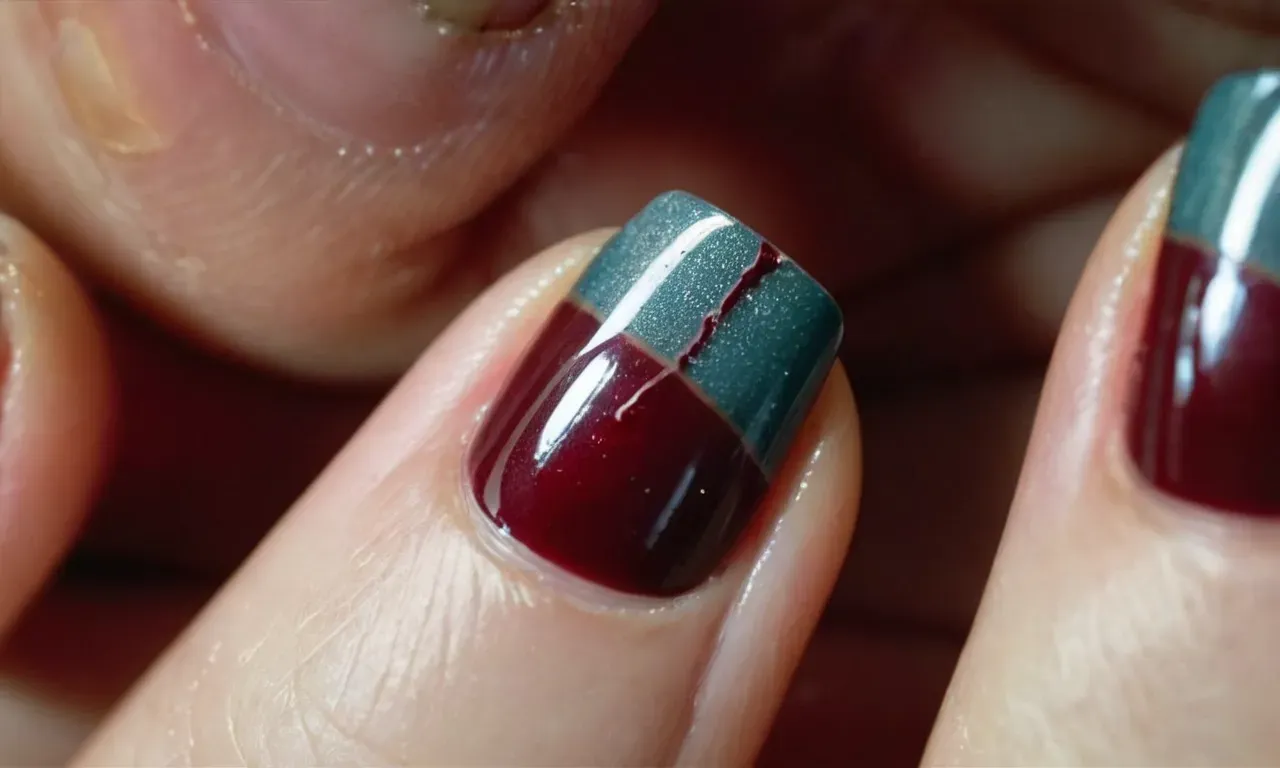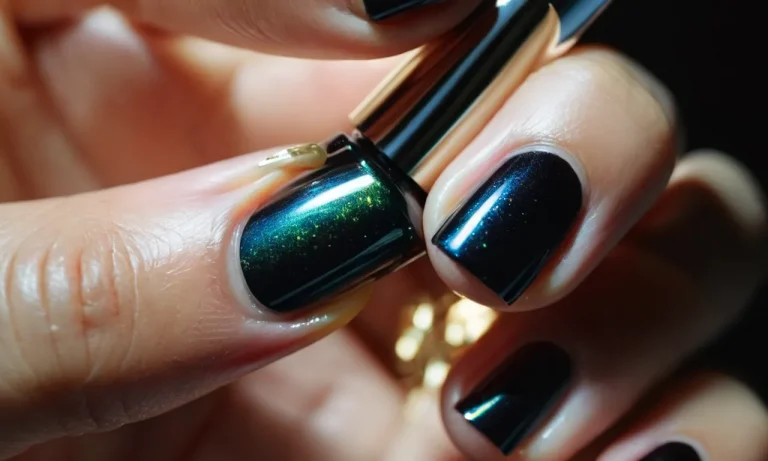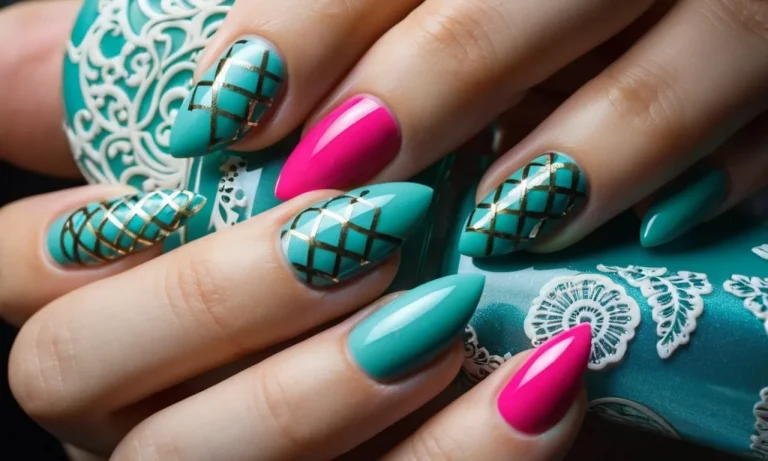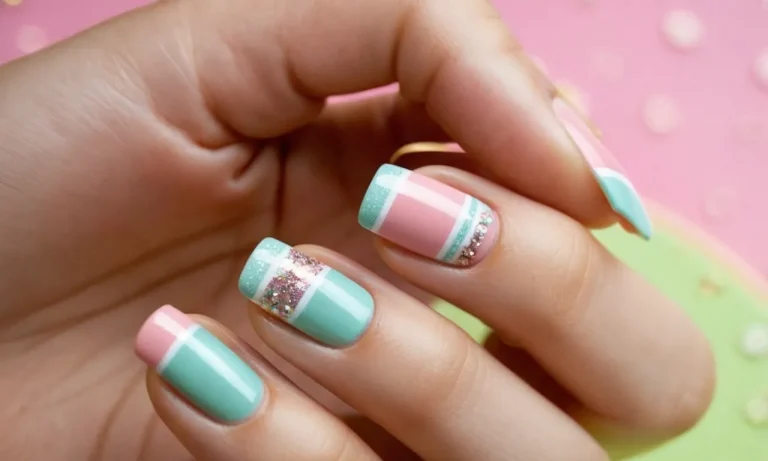Why Is Nail Biting Bad? A Comprehensive Look
Nail biting is a common habit many people have, but it can lead to several health and aesthetic issues. If you’re wondering why you should stop biting your nails, read on to learn all the reasons this habit can be detrimental.
If you’re short on time, here’s a quick answer to your question: Nail biting can damage nails and cuticles, lead to infections, harm teeth, and is also socially unacceptable.
In this comprehensive article, we will examine the various health risks associated with nail biting, the effects it can have on physical appearance, and provide tips for how to quit this harmful habit.
Health Risks of Nail Biting
Damaged Nails and Cuticles
Nail biting can lead to numerous issues with the nails and cuticles, including:
- Ragged, torn, or uneven nail edges
- Thin, brittle, or soft nails
- Sore, red, swollen, or inflamed cuticles
- Open wounds around the nail beds from biting too deep
- Ingrown toenails
These effects are often unsightly and painful. The more you bite the nails, the worse the damage becomes over time. In severe cases, aggressive biting can destroy the nail beds and distort nail growth permanently.
Infections
Putting your fingers in your mouth introduces all sorts of bacteria, viruses, and fungi. Nail biters are at an increased risk of developing infections such as:
- Paronychia – infection of the skin around the nails
- Whitlow – fingertip inflammation and infection
- Herpetic whitlow – a painful viral infection of the finger
- Warts – caused by human papillomavirus (HPV)
In rare cases, nail biting habits can lead to severe infections requiring hospitalization. One example is Ludwig’s angina – a serious cellulitis which can block the airway.
Dental Issues
Habitual nail biting can also damage teeth. Problems include:
- Cracks and chips
- Wearing down of enamel
- Increased risk of cavities and decay
- Gum recession and periodontal disease
- Tooth sensitivity
The excessive force applied while chewing nails can fracture teeth over time. This damage also allows more bacteria to accumulate on teeth. One study found tooth decay was 3.6 times more likely in nail biters compared to non-biters.
Effects on Physical Appearance
Damaged Nail Beds
Chronic nail biting can lead to inflammation, infection, and permanent damage to the nail beds. As the nails are bitten down repeatedly, the skin around the nail beds gets torn and injured. This allows bacteria and pathogens to enter, leading to pain, redness, swelling and pus formation.
In severe cases, permanent scarring and distortion of the nail plates and cuticles can occur. Recurrent infections may also kill the nail root cells, preventing future nail growth.
Irregular Nail Shapes
Habitual nail biters often have nails of irregular lengths and shapes. As nails are bitten randomly based on stress triggers or unconscious habits, some nails become extremely short while others may be left longer.
This causes uneven, jagged nail ends instead of the smooth, uniform crescent typical of healthy nails. Misshapen nails may also curve in unusual directions or become fragile and thin over time.
Red/Inflamed Cuticles
Intense nibbling and pulling of the nail cuticles leads to torn, irritated skin around the nails. The cuticles act as seals to prevent bacteria entry, so damaging them allows infection which manifests as redness, swelling, and pain. Inflamed cuticles are also more prone to painful hangnails.
A 2021 survey by the American Academy of Dermatology found that 87% of nail biters had visible cuticle damage and inflammation.
Social and Psychological Impact
Perceived as Unhygienic Habit
Nail biting is often viewed as an unclean, unhygienic habit. When done frequently in public, it can elicit reactions of disgust from others. Some consider it a sign of anxiety or nervousness. This perception can lead to feelings of embarrassment and low self-esteem in those who bite their nails.
Sign of Nervousness or Anxiety
Many nail biters do it as a response to stress, anxiety, boredom or nervousness. It can become a coping mechanism or displacement activity. Nail biting peaks during stressful events. Some research shows that 25-30% of teens bite their nails due to anxiety.
Experts say the repetitive behavior provides temporary relief from the triggers.
Low Self-Esteem
Having unattractive fingers with ragged, bitten nails can cause self-consciousness and lower self-confidence. This is especially true for teens concerned about their appearance and acceptance from peers. Nail biting may affect their willingness to participate in activities like sports.
According to one study, 63% of teen nail-biters had low self-esteem compared to 23% of non-biters.
The social stigma and anxiety associated with chronic nail biting can lead to reduced satisfaction and problems in relationships. Letting go of this habit can improve one’s self-image. With healthier nails, people may feel more confident socially and emotionally.
Tips to Stop Nail Biting
Identify Triggers
Recognizing situations, emotions, or activities that lead to nail biting can help you avoid or manage those triggers. Many nail biters chomp away without thinking when they feel bored, stressed, or anxious. Keeping a journal to log when and why you bite your nails raises your self-awareness.
Once you identify patterns, you can find healthier alternatives when triggers arise.
Keep Nails Trimmed
Filing your nails to maintain a short length minimizes the temptation and satisfaction of biting them. Use an emery board to gently smooth rough edges. Frequent trims also help nail bed regrowth. The American Academy of Dermatology Association recommends applying moisturizer after to condition your nails and cuticles.
Use Foul-Tasting Nail Polish
Painting nails with unpleasant polish deters biting. Many polishes contain non-toxic yet bitter additives that curb the urge to bite. Just be mindful that some ingredients may cause allergic reactions. When shopping, read reviews to discover popular, well-tolerated options.
Find Alternatives for Oral Stimulation
Satisfying the need to occupy your mouth with other (healthier) activities helps break nail biting routines. Chewing sugar-free gum, snacking on crunchy veggies, sipping water through a straw, fidgeting with a stress ball, or doodling on a sketchpad can divert you.
Having other oral substitutes handy when cravings kick in makes it easier to avoid relapsing.
Reward Yourself for Progress
Positive reinforcement while overcoming any habit bolsters motivation and self-confidence. Celebrate bite-free milestones by treating yourself to something special – whether it’s getting a manicure, enjoying a decadent dessert, taking a bubble bath, or watching a movie.
Even small victories along your journey should receive a morale-boosting reward.
Conclusion
In summary, nail biting can have detrimental effects on your health, appearance, and social life. From increased risk of infection to dental damage and social stigma, this habit impacts you in various negative ways. Thankfully, with determination and commitment, you can stop nail biting for good.
Identify triggers, keep nails neatly trimmed, and try foul-tasting polishes or oral alternatives when you feel the urge to bite. With time, you can break this habit and enjoy healthy, attractive nails.







